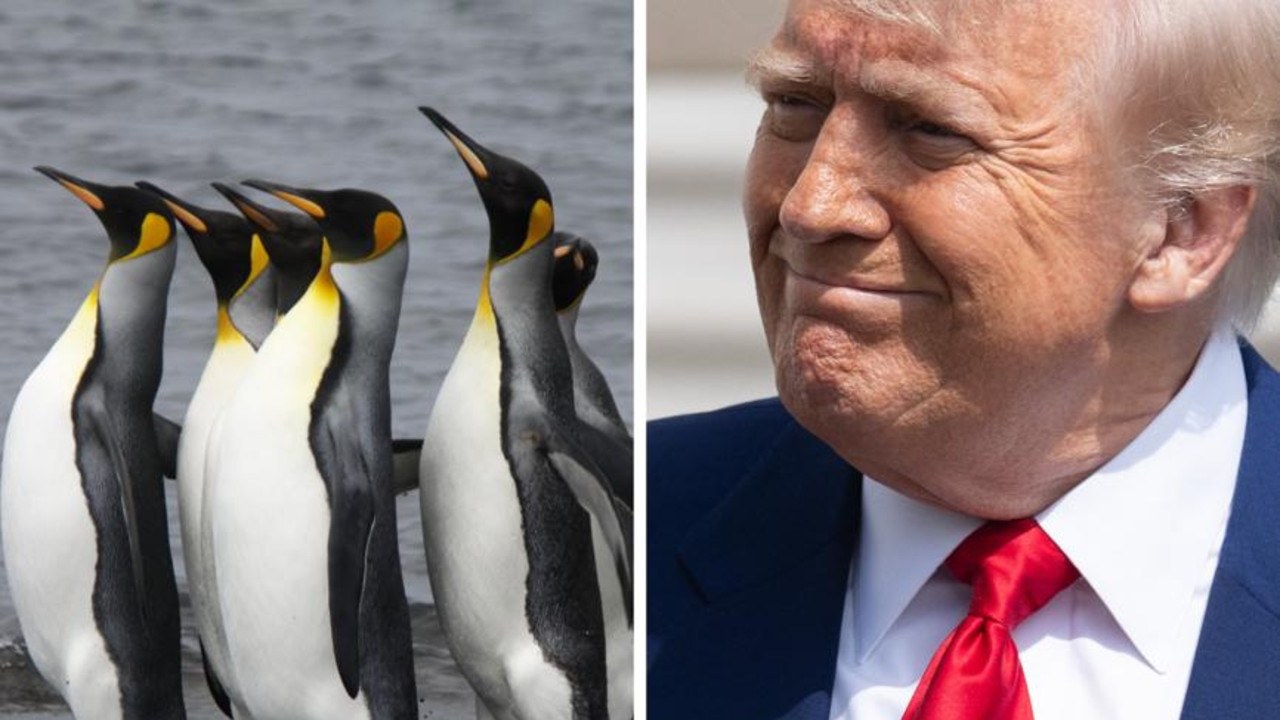Vladimir Putin twitches and shakes while delivering speech to Russian students
The Russian President was filmed looking very uneasy while lecturing school children about Ukraine-Russia history. Watch video.
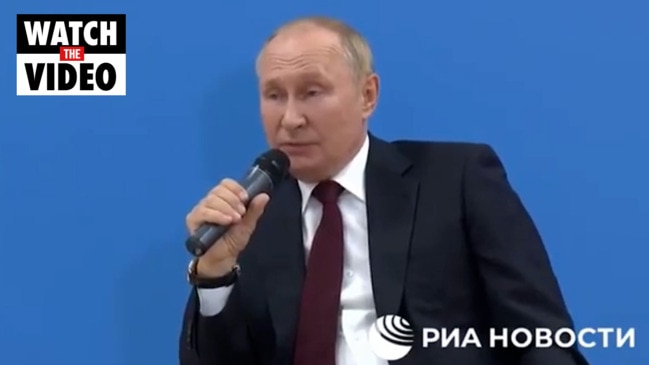
World
Don't miss out on the headlines from World. Followed categories will be added to My News.
Vladimir Putin twitched and shook as he delivered a speech to Russian school children.
A new video shows the Russian President continuously twisting his feet and legs while telling students that “Ukraine and Russia were part of a united country.”
During his speech, an uneasy Mr Putin said the Russian education minister had revealed that children in the Russian-occupied Donbas “didn’t even know that Ukraine and Russia were part of a united country.”
Mr Putin was in Kaliningrad, which is a city that sits on the Baltic Sea between Poland and Lithuania.
Annexed from Germany in 1945, the territory was a closed military zone throughout nearly all of the Soviet period.
COUNTRY RUSSIA COULD INVADE NEXT
Ukraine has issued a stark warning over Russia’s “false pretext” for an invasion of Moldova as the Balkan country moves to join the European Union.
Ukraine foreign ministry spokesman Oleg Nikolenko said Moscow had begun planting the seeds to justify a second theatre of war in Europe.
It comes after his Russian counterpart Sergei Lavrov warned Moldova that threatening Russian troops in the rebel region of Transniestria risked triggering a confrontation with Moscow.
“Lavrov says Moscow will spare no effort in defending the Russian speaking population in Moldova. We have seen that. This was the exact false pretext Russia used to justify its invasion of Ukraine,” he said.
“We express our full support to Moldova’s sovereignty and territorial integrity.”
Transniestria has been home to Russia peacekeeping troops since the early 1990s, when an pro-Russian separatists took control of the region from Moldova.
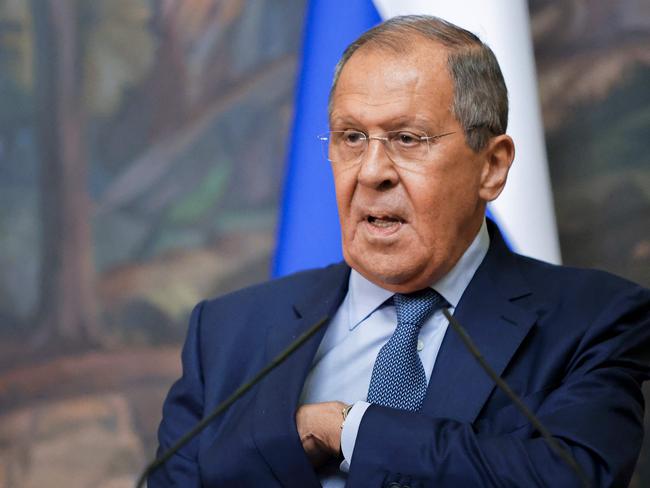
Moldova wants Moscow to withdraw its troops, but Russia’s foreign minister threatened retaliation if there was any move to force them out.
“Everyone should understand that any action that would threaten the security of our troops would be considered under international law as an attack on Russia, as was the case in South Ossetia when our peacekeepers were attacked by (former Georgian president) Saakashvili,” Lavrov said.
That led to the five-day war in 2008 that resulted in the levelling of several Georgian cities and the recognition of South Ossetia and Abkhazia as independent.
It comes as Germany, which yesterday warned Russia could open a ‘second theatre of war’, supported Moldova and other Balkan nations like Ukraine joining the European Union.
German Chancellor Olaf Scholz said that he “committed” to the European Union expanding to include the six nations of the western Balkans; Ukraine, Moldova, Albania, North Macedonia, Serbia and Montenegro.
“Their EU accession is in our interest,” said Scholz.
RUSSIA COULD OPEN ‘SECOND THEATRE OF WAR’
Germany’s highest-ranking defence official has warned that Moscow has the capability and will to launch a second theatre of war at the whim of Russian President Vladimir Putin.
Chief of Defence General Eberhard Zorn said in an interview that most of Russia’s air force and navy are yet to be deployed in Ukraine and could fight on a second front at a moment’s notice.
“The bulk of the Russian land forces may be tied down in Ukraine at the moment but, even so, we should not underestimate the Russian land forces’ potential to open a second theatre of war,” Mr Zorn told Reuters.
“Most of the Russian navy has not yet been deployed in the war on Ukraine, and the Russian air force still has significant potential as well, which poses a threat to NATO too.”
The stark warning comes as the world’s attention focuses on Ukraine’s counteroffensive to retake the southern Kherson region on the Black Sea coast.
Mr Zorn added that Russia still has the capability to launch an offensive elsewhere in Europe even as it attempts to repel the Ukraine counter-attack.
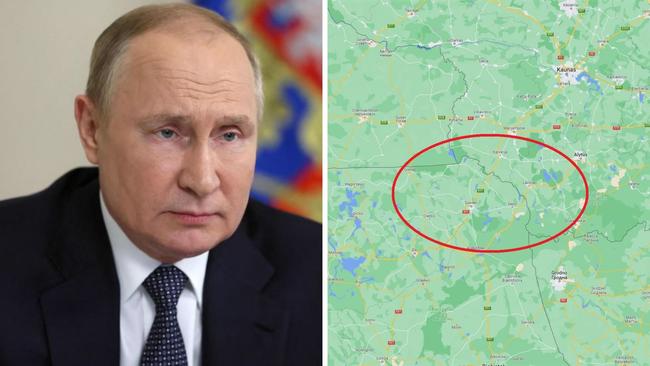
He added that Mr Putin was “very well capable” of expanding to conflict regionally to other fronts, such as the Russian enclave of Kaliningrad between Poland and Lithuania, which hosts Moscow’s Baltic naval fleet and nuclear Iskander missiles.
“That this would be a very unreasonable thing for Russia to do is a different story,” Mr Zorn told Reuters.
He added that Russia was not in danger of running out of ammunition any time soon despite firing between 40,000 to 60,000 rounds of artillery in Ukraine per day.”
“Supported by massive artillery fire, they are driving their advance forward – regardless of civilian Ukrainian casualties,” he said.
“The Russians have enormous quantities of ammunition at their disposal. This ammunition is partly old and very inaccurate but it is exactly this that causes great destruction to civilian infrastructure.”
RUSSIANS FLEE UKRAINE COUNTER ATTACK
Ukraine reported “heavy fighting” in “almost the entire territory” after launching a major counter-attack to retake the southern region of Kherson.
It came as Moscow’s installed leader claimed there was no danger while running to the safety of a five-star hotel in Russia.
Intense fighting raged across the southern region with Ukraine troops pushing in “various directions” into the region along the Black Sea.
While the Russian-installed deputy leader of Kherson, Kirill Stremousov, reassured “everything is fine” and that he would travel freely around the region, analysis of his in a Telegram video showed he was holed up 900 km away at the Marriott Hotel, in the Russian city of Voronezh.
It comes after President Volodymyr Zelenskyy told the Russian military to “run away” and “flee for their lives” as he ordered the Ukrainian military to retake Kherson.
#NewsMap
— Julian Röpcke🇺🇦 (@JulianRoepcke) August 30, 2022
"Kherson will never again be under the control of the Nazis", the Russian puppet "deputy governor for Kherson" Kirill Stremousov claimed this morning.
He is so certain of a Russian victory, he precautionarily recorded his message in Voronezh's Marriott hotel, Russia. pic.twitter.com/q2PsZJcYbU
1/ 🤡Kirill Stremousov (deputy commander of the Kherson occupation administration) filmed a video greeting to the residents that Kherson will remain Russian forever.
— Tarmo Juntunen 🇨🇿 🇺🇦 🇪🇺 NAFO (@TarmoJuntunen) August 30, 2022
The video was filmed from the Mariott Hotel in Voronezh (38 Revolutionary Avenue) 👇 pic.twitter.com/kmMHG6i0pl
The UK’s former MI6 chief Sir Alex Younger said the counteroffensive to get on the front foot and retake Kherson was “extremely unexpected”.
“The forces have reached some kind of balance, which is an extremely unexpected and frankly welcome situation for us to be in,” he told BBC.
With the war in the eastern Donbas region largely stalled, analysts have said for weeks that combat is likely to shift south to break the stalemate before winter comes.
Ukraine said the heaviest fighting was taking place almost entirely in the Kherson region, with “powerful explosions continued throughout the day and throughout the night”.
In the town of Bereznehuvate — 70 kilometres north of the frontline in Kherson city soldiers rested by the roadside.
“We forced them well back,” said infantryman Victor, in his 60s, told AFP.
His commander Oleksandr, added that the fight to retake Kherson will be “long and complicated”.
Oleksiy Arestovych, one of president Volodymyr Zelenskyy’s senior advisers, said troops broke through Russian lines within “a few hours” of starting their counter-attack.
The Ukraine southern command claimed it inflicted heavy losses on Russian units, adding it killed at least 82 Russian soldiers, destroyed several ammo depots, and “had unquestionably weakened the enemy”.
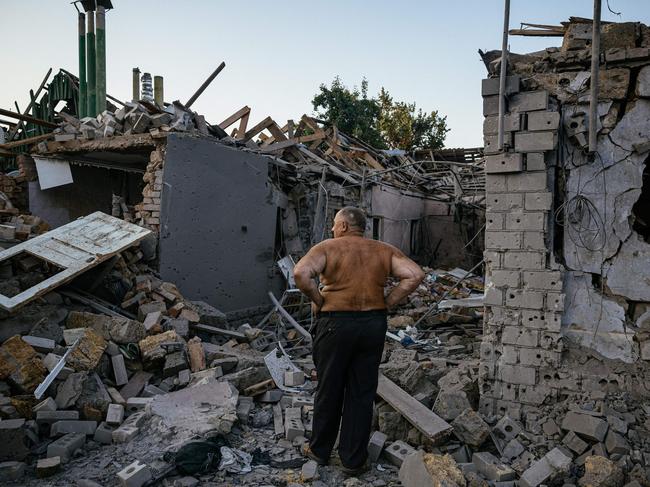
Power outages hit parts of Kherson city while parts of the region have also seen their water supply cut off, according to Russian news outlet RIA Novosti.
Moscow, meanwhile, continued to press in the northeast city of Kharkiv with at least five people killed in the shelling.
Russia’s defence ministry claimed Ukraine suffered “large-scale losses” of more than 1,200 soldiers, 150 vehicles and dozens of pieces of equipment during the “defeat” of its southern counter-attack.
Spokesman Dmitry Peskov told reporters that everything was going as planned despite Kyiv’s counter-attack.
“The special military operation continues, it continues methodically, and in co-ordination with the current plans. All objectives will be fulfilled,” he said.
A senior Pentagon official, however, said Russia was struggling to find soldiers to fight in Ukraine and that many new recruits were older, in poor shape and lacking training.
The city of Kherson city is split by the Dnipro River, which Britain’s defence ministry warned this month had been significantly reinforced by Russian troops on its western bank.
The British ministry said “most of the units around Kherson are likely undermanned and are reliant upon fragile supply lines by ferry and pontoon bridges across the Dnipro”.
“It is not yet possible to confirm the extent of Ukrainian advances,” the ministry said on Tuesday.
Kherson, a city of 280,000 residents, was seized by Moscow on March 3 – just one week after fighting began on February 24. The region is crucial for agriculture, and important due to its proximity to the Crimean peninsula annexed by Russia in 2014.
Ukraine’s Southern Command said the situation remained “tense” in its area of operations.
“The enemy attacked our positions five times, but was unsuccessful,” it said. The city of Mykolaiv, just northwest of Kherson, had come under “massive bombardment” from Russian anti-aircraft missiles, with two civilians killed and 24 wounded, it said.
As intense fighting raged across Kherson, a 14-strong International Atomic Energy Agency made its way to Europe’s largest atomic facility on the city’s Dnipro river- which has been occupied by Russian troops since early March.
“This is probably one of the top-priority questions regarding safety of Ukraine and the world today,” Zelenskyy said, calling for the “immediate demilitarisation of the plant” and its transfer to “full Ukrainian control”.
The long and difficult fight to retake Ukraine’s strategic and symbolically important southern region after six months is considered a “third chapter” of the war with Russia.
The first chapter was Moscow’s troops trying to storm the capital of Kyiv, with the second being its pivot to the eastern Donbas region and the resulting stalemate.
Kyiv took the initiative in the third chapter, saying its strikes targeted ammunition dumps and “almost all large bridges” crossing the Dnipro River, leaving only pedestrian crossings standing.
The region has two million hectares of arable land, and acts as a southern gateway for Russia to transport troops and material.
If Russia can keep the corridor open, it can pressure Ukraine along two fronts. But if Kyiv can close it, it can focus on the fight to the east.

The Kherson region also sits on Ukraine’s Black Sea coast, where Russia covets warm water ports that are key to economic prosperity.
Earlier this month a commander in the area said that any Ukrainian counter-attack would have to take place before the harsh winter when fighting will get bogged down.
– with AFP




